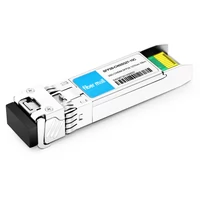The need for faster data transfer has grown in the ever-changing world of technology. This means that Ethernet connections must also evolve to provide quicker internet speeds. That’s where the SFP28 25G CWDM transceiver module comes into play; it is one of many breakthroughs in this area. This device was created to meet the bandwidth demands of contemporary networking environments. In addition to going over what it does and how it works, we will discuss why you should care about SFP28 25G CWDM transceiver modules and where they can be applied within different industries throughout this article. As we delve deeper into what makes them so unique from other technologies available today, our goal is that by reading this text, readers will have gained some insight into where their Ethernet may be headed next thanks to devices like these, which promise not only faster speeds but also more robust networks overall.
Table of Contents
ToggleWhat is an SFP28 transceiver?
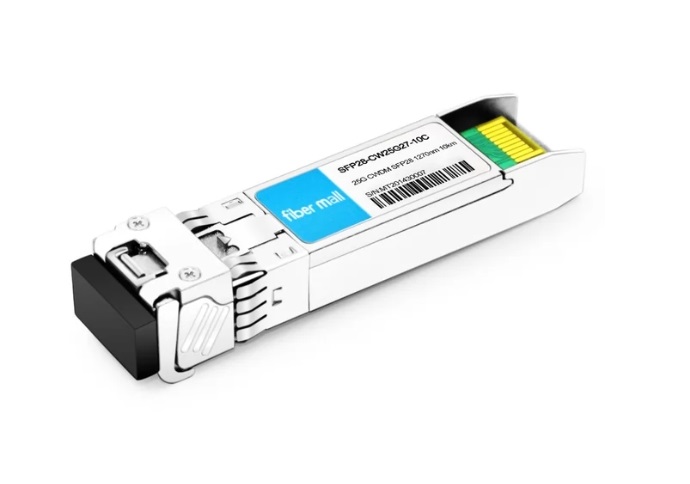
How does an SFP28 work?
The SFP28 transceiver is a high-speed data transmission unit that uses electrical and optical components for this task across fiber optic networks. This module can be easily plugged into and removed from switches, routers, and other networking devices because of its Small Form-factor Pluggable (SFP) design. It changes electric signals received from the host device into optic ones and sends them through a fiber-optic cable. To be more precise, the SFP28 works with the CWDM technology, which enables the simultaneous use of different wavelengths over one fiber, leading to 25 Gbps data rate support. It not only increases bandwidth efficiency but also saves additional cabling infrastructure. When such an optical signal arrives at its destination point, it has to become an electrical signal again to be processed, thereby completing the data transmission cycle.
Differences between sfp28 and 25g
SFP28 and 25G differ mainly in terms of form factor and flexibility in application. SFP28 is a transceiver module specifically designed to support data rates of 25 Gbps over both short and long distances on single-mode and multi-mode fibers, whereas “25G” denotes the data rate more generally. Various technologies and form factors can achieve 25G, including other types of transceivers beyond SFP28, like QSFP28, which multiplexes multiple channels to enable higher data rates. Additionally, SFP28 modules usually have additional features that allow them to be backward compatible with SFP+ modules (10Gbps), thus providing an upgrade path for existing network infrastructures. To put it differently, while broader solutions may exist within the network hardware ecosystem for achieving 25G performance, SFP28 is a specific implementation.
Applications of sfp28 transceivers in data centers
In modern data centers, SFP28 transceivers are important because they can send information quickly and help networks work better. They are often used in applications that involve a lot of data, like cloud computing services, high-frequency trading, or large-scale data analytics. The fact that SFP28 optics work with 25 Gbps connections means that they can process huge amounts of information at once without experiencing any delays, which would slow down everything else. Additionally, these modules support single-mode and multimode fibers, so you have more flexibility when designing your network and can cover different distances as needed. Another benefit is energy saving – SFP28 saves power per transmitted bit compared to previous-generation technologies, thus making operations more sustainable and cost-effective at data centers, too!
How does 25g cwdm technology benefit data centers?
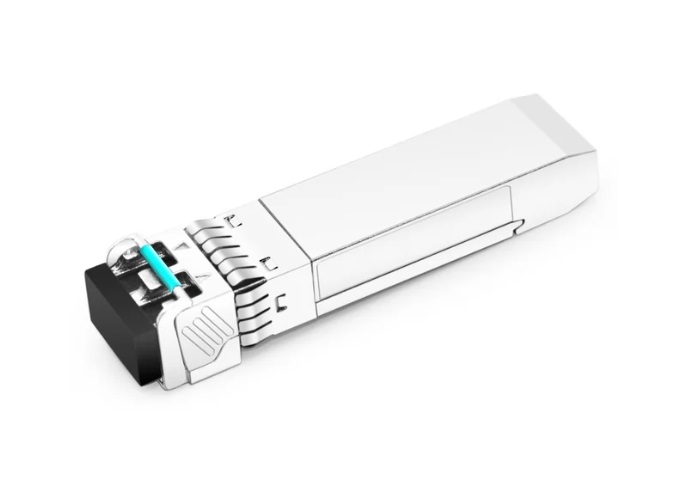
Advantages of 25g cwdm sfp28 transceivers
25G CWDM SFP28 transceivers have many benefits that improve performance and efficiency in data centers. Firstly, they allow a lot of data to be sent over one fiber by using many different colors of light; this means more bandwidth can be made available without needing extra cables. This increases the amount of information that can be transferred at any given time while reducing the delay between when something is requested or sent and when it is received—especially important for cloud services and big data analytics.
Secondly, Coarse Wavelength Division Multiplexing (CWDM) technology enhances spectral efficiency, permitting transmission across more expansive areas with less signal loss due to weakening. This becomes essential when large-scale geographically dispersed data centers require frequent regeneration points, thus reducing this need significantly and lowering associated costs.
Furthermore, 25G CWDM SFP28 transceivers are compatible with current 10G infrastructures, making them perfect for organizations that want to improve network speed without purchasing new devices altogether. Last but not least importantly, their energy-saving design saves power and supports sustainable development programs, thereby matching environmental consciousness trends in today’s world characterized by a growing number of “green” initiatives aimed at ensuring eco-friendliness within the sphere of activities undertaken within a typical data center setting.
Role of cwdm transceivers in modern networks
Regarding modern networking environments, CWDM transceivers are crucial because of increasing data demands. By making use of wavelength multiplexing, such transceivers can enable multiple data streams to be sent over one optical fiber, thus maximizing bandwidth capacity utilization while minimizing infrastructure costs; this feature is handy in metropolitan area networks (MANs) and long-haul networks where demand for high-speed connectivity is rapidly rising.
Moreover, these devices also help improve network scalability and flexibility, allowing service providers (SPs) to quickly respond to changes in bandwidth needs without going through a major overhaul of their infrastructures. In addition, they support cloud computing and virtualization strategies by providing high-capacity connections between different data centers, leading to better performance in such mission-critical applications. As organizations increasingly adopt data-driven approaches to running their businesses, it becomes imperative that CWDM technology be implemented since it promotes efficient transportation of information while at the same time reducing the carbon footprint associated with extensive cabling systems.
Implementing 25g solutions in data centers
Adopting 25G solutions in data centers means upgrading the network infrastructure strategically to meet the increasing bandwidth requirements brought about by virtualized services, cloud computing, and big data applications. These are some of the things that need to be done:
- Infrastructure Evaluation: Before implementing the 25G technology, it is essential to examine the current infrastructure thoroughly. This evaluation will help identify potential bottlenecks within the network and ensure that it is compatible with other devices, such as routers, switches, and transceivers.
- Optical Transceivers: When moving towards 25G, appropriate optical transceivers have to be used, usually in the SFP28 form factor. These types of transceivers enable fast data transmission while utilizing existing fiber optic cables, which reduces interference during the migration period.
- Network Design and Architecture: Data centers must develop a networking model that can effectively handle 25G connections. For instance, where network switches should be placed and spine-leaf designs adopted for better flow of information with low latency.
- Scalability: One of the benefits derived from deploying 25G solutions is improved scalability across networks; therefore, organizations must plan for future expansion by ensuring their architectures are capable enough to accommodate additional bandwidths as demanded by ever-growing data traffic.
- Cost Efficiency: Although investment in the initial stages may appear costly compared to operational savings or increased efficiencies gained later on, it is limited. Therefore, consider this example but not necessarily use similar words. Employing hardware designed for low power consumption would further enhance the cost-effectiveness, as well as promote green initiatives in business environments.
Implementing these points will enable the successful deployment of a twenty-five gigabyte per second solution in any given data center, thus matching modern digital application requirements with network capabilities.
What are the specifications of the 25g cwdm sfp28 transceiver module?
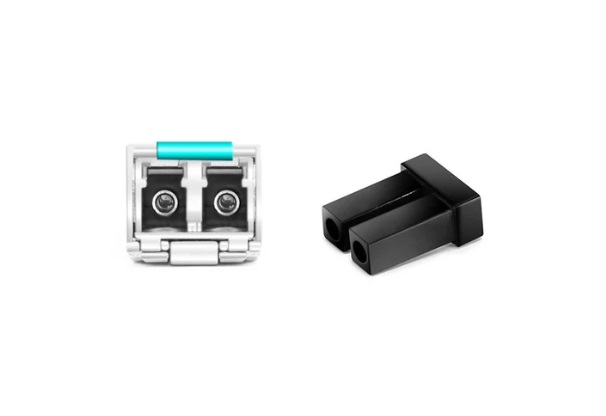
Key features of cwdm 1270nm
- Wavelength and Range: The transceiver CWDM 1270nm SFP28 works on the wavelength of 1270nm, which supports data transmission up to 40 kilometers over single-mode fiber (SMF), thus ensuring reliability in broad network applications.
- Data Rate: This module is designed for data rates of 25 Gbps, so it can be used in high-bandwidth applications within data centers to enhance throughput while meeting the needs posed by increased data traffic.
- Form Factor: This transceiver at 1270 nm is configured as a small form-factor pluggable 28 (SFP28) and compatible with different networking equipment types. This allows easy integration and hot-swappable capability, which reduces downtime during maintenance procedures.
- Power Consumption: This module normally consumes low power, around 1.5W, contributing to energy efficiency across the network infrastructure and saving power.
- Compatibility: The CWDM 1270nm SFP28 transceiver meets international standards like IEEE802.3 and MSA specifications, so it can work well with equipment from various vendors, making deployment easier.
- Temperature Range: It has a wide operating temperature range, usually from -40°C to 85°C, meaning that it can work under different environmental conditions without failure and thus give reliable performance throughout diverse installations.
Performance metrics: 10km and 40km ranges
The CWDM 1270nm SFP28 transceiver module works excellently over 10km and 40km. At a range of 10 kilometers, this module provides high-speed data transmission with good signal quality and low error rate, which is very important for short-haul connectivity in the data center or enterprise network application. While transmitting over 40 kilometers, it still maintains efficiency, conforming to long-distance data transfer requirements where advanced optical parts are utilized to reduce dispersion, enhancing the clarity of signals and ensuring reliable connection even over longer distances. While specific performances may depend on environmental conditions and fiber optic cable qualities, among others, generally, these devices are designed for use in metropolitan area networks as well as wide area ones where there could be a need for both short-reach and long-haul communication links.
Compatibility with other sfp28 modules
The SFP28 transceiver for CWDM 1270nm can be used with various SFP28 modules made by different manufacturers. Most industry reports say that such modules comply with MSA standards. This means they work with each other. A good example is when many suppliers have their own SFP28 module, which uses the same light wavelength and offers the same data rates to fit into any network easily. Besides supporting SFP+ interfaces, the CWDM 1270nm works effectively in mixed environments. Following specific vendor instructions to check compatibility and achieve the best performance across wide-ranging settings is better.
How can compatibility with sfp28 25g cwdm be ensured?
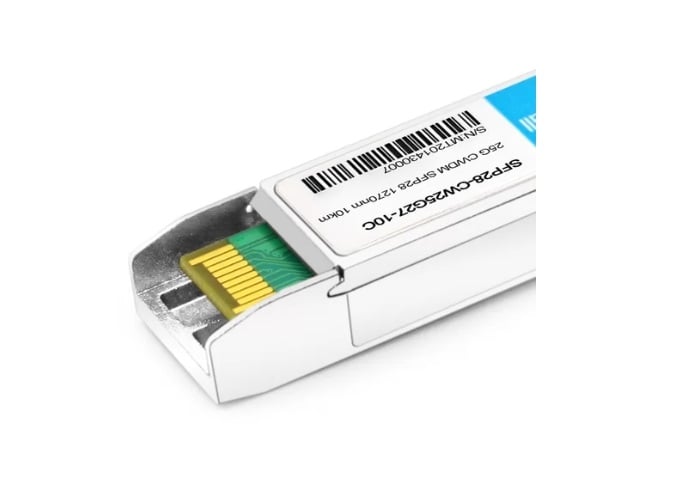
Verifying compatible sfp28 models
To be compatible with SFP28 25G CWDM, follow these steps:
- Check Manufacturer Specs: The compatibility charts are usually included in the documentation provided by manufacturers of transceivers. Sometimes, long lists showing compatible models and configuration settings for best performance may be shown.
- Verify MSA Compliances: Multi-Source Agreement (MSA) specifications are essential because they ensure that different products can work together. You must confirm whether both your CWDM transceiver and connecting SFP28 modules meet this requirement, hence avoiding any possible problems arising from incompatibility.
- Optical Performance Protocols: You need to look at what wavelength and data rate various vendors state as their optical performance characteristics. This will aid you in aligning them so that the signal integrity is maintained across all devices used, thus making it more reliable.
By doing this, network administrators can confidently select suitable SFP28 modules, knowing that they will operate smoothly within an already existing infrastructure.
Using mux demux with cwdm transceivers
The main approach for increasing network capacity and efficiency is integrating multiplexers and demultiplexers (mux/demux) with CWDM transceivers. Below is a quick rundown of what you need to know:
- Design: Mux/demux gadgets allow the transmission of many optical signals via one fiber. When using CWDM transceivers, choose mux/demux devices that support the CWDM wavelengths (normally between 1270nm and 1330nm in increments of 20nm) for maximum spectral efficiency.
- Integrity: Choose mux/demux components that have been optimized for minimum insertion loss and the best possible channel isolation to maintain signal integrity throughout your network.
- Compatibility: Just like SFP28 modules, you should check if CWDM transceivers can work with different brands of mux/demux units by looking at manufacturer specifications. Manufacturers usually provide typical compatibility charts to make this process easier.
- Deployment: During the deployment stage, consider things like temperature changes or humidity since they may affect how well these optical devices perform in real-world environments; therefore, proper housing along with routing becomes crucial for sustaining ideal operational conditions.
These tips will enable network engineers to successfully utilize such features while realizing advanced optical networking capabilities through the reliability and performance they provide when used together with CWDM transceivers.
Connecting to various cable types: DAC and AOC
When it comes to modern optical networks, choosing between Active Optical Cables (AOC) and Direct-Attach Copper (DAC) cables is very important in terms of better data transmission. These copper wire-made DAC cables, consisting of transceiver modules on both ends, are cost-effective for short connections, generally up to 7 meters. They have low latency and consume the least power but can be restrictive in terms of distance and flexibility.
On the other hand, AOC cables use fiber optics with built-in transceivers to remain lightweight and flexible even over longer distances of up to 100 meters or more. This makes environments where electromagnetic interference may be a concern, such as high-speed data transmission, ideal. Establishing which cable type is most appropriate for optimum performance in specific network environments – like knowing the distance requirement alongside bandwidth needs – will assist network engineers greatly. Every kind of cable has its applications, and implementing them correctly will improve overall efficiency and reliability within network infrastructure.
What are the benefits of using 25gbase-cwdm sfp28?
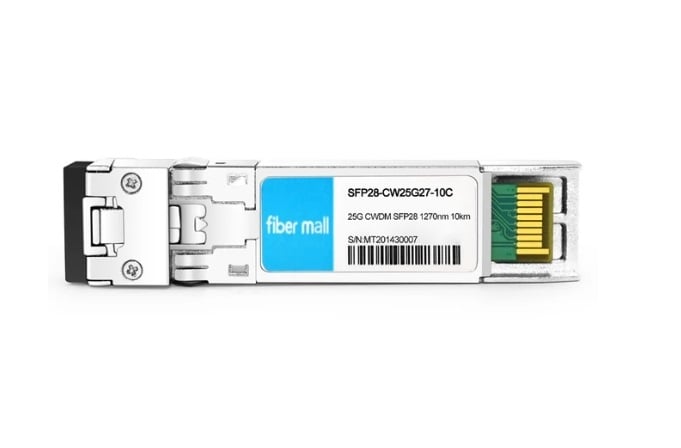
Enhanced Ethernet connectivity options for 25g
25GBASE-CWDM SFP28 modules are a big step forward in Ethernet connectivity, especially for high-demand networks. These transceivers use coarse Wavelength Division Multiplexing (CWDM) technology, which means that many data channels can be transmitted simultaneously on one fiber optic strand. This maximizes bandwidth efficiency while minimizing the amount of physical infrastructure required, as higher data rates can now be achieved using fewer fibers.
In addition to the above, another advantage of implementing 25GBASE-CWDM SFP28 modules into your network is that they make scaling easier. This means that as more and more data starts flowing through your system, you add some transceivers here or there instead of having to redo everything each time. They also work with current 10G infrastructures so companies can upgrade their speeds without buying all new hardware and thus save money, too. In short, 25GBASE-CWDM represents a significant breakthrough for supporting future applications like cloud computing centers and high-definition video streaming services, where large amounts of information must be sent quickly over long distances.
Reliability and robustness of single-mode fiber
Single-mode fiber (SMF) is reliable and has strong signals, which makes it great for long-distance data transmission. It can send huge amounts of data across many miles, often more than 10km, without losing any signal because it has high bandwidth capacity. They have small core diameters (usually 8-10 microns) through which only one light wave can be transmitted at a time, unlike multi-mode fibers, minimizing modal dispersion and improving signal quality.
In addition, single-mode fiber is built with ruggedness, thus able to withstand severe conditions like extreme temperatures or wetness, increasing its life expectancy. Multi-mode fibers are prone to power loss and chromatic dispersion over longer distances, but single-mode fibers will still work reliably under challenging environments where performance consistency matters most. It also has inherent electromagnetic interference immunity, which guarantees steady signal delivery. It is, hence, suitable for mission-critical applications in telecommunication systems and data centers, among others, within industrial networks. All these qualities imply that single-mode fiber is the most robust option for any organization wishing to keep pace with future technological advancements while ensuring sustained dependability throughout their networking infrastructure.
Efficiency in fiber optic communication
Several factors make fiber optic communication highly efficient. The first is that light as a transmission medium enables data to be transmitted at speeds almost equal to those of light, which is much faster than traditional copper wires. Fiber optics can do this quick transmission because they have low attenuation properties; hence, signals can go for long distances without repeaters.
Secondly, fiber optic cables have a large bandwidth capacity, allowing several data streams to be sent simultaneously. This is very useful when vast amounts of information, such as data centers and enterprise networks, need to be moved within a short time. Moreover, unlike other types of cables, fibers are unaffected by electromagnetic interference, so even if many people use them in one place, the signal will still stay safe. All these things together create such great speed in using fiber optics for communication that without it, modern telecommunications would collapse.
Reference Sources
Frequently Asked Questions (FAQs)
Q: What is an SFP28 25G CWDM Transceiver Module?
A: An optical transceiver, called an SFP28 25G CWDM Transceiver Module, has been designed to transmit 25GBase-CWDM up to 10 km on single-mode fiber (SMF) through a duplex LC connector. It follows MSA standards and supports 25G Ethernet connectivity.
Q: What are the typical applications of a 25G SFP28 CWDM transceiver?
A: A 25G SFP28 CWDM transceiver can be used in data center interconnects, enterprise networks, telecoms, or fiber channels; it is useful in environments where high throughput and long-distance connectivity are needed.
Q: What wavelength options are available for the SFP28 25G CWDM transceiver?
A: The modules of this type come with different wavelengths, such as 1270nm,1290nm, or even 1330nm, which can be selected according to distance requirement and network setup, among other things.
Q: Are 25G SFP28 CWDM transceivers compatible with Cisco and Juniper equipment?
A: Yes, they are because most act as 25G Ethernet components that work seamlessly with Cisco and Juniper network equipment. However, always check the compatibility list of specific transceivers for proper integration.
Q: How do digital diagnostics functions (DOM) benefit the 25G SFP28 CWDM transceiver?
A: DOM (digital diagnostics functions) provides real-time monitoring for temperature, voltage, optical power levels, etc., helping in proactive network management and troubleshooting and ensuring optimal performance of the optical transceiver module.
Q: Does the 25G SFP28 CWDM transceiver obey industry standards?
A: The 25G SFP28 CWDM transceiver complies with MSA and other industry standards, such as SFF-8472. Compliance enables different hardware and network configurations to work together reliably.
Q: To what distance can the 25G SFP28 CWDM transceiver reach?
A: The 25G SFP28 CWDM transceiver can support a typical distance of up to 20km over single-mode fiber (SMF). However, some models might have different ranges, so it is necessary to check module specifications.
Q: How do I install an SFP28 25G CWDM transceiver?
A: You install a 25G SFP28 CWDM transceiver by plugging its module into a compatible network equipment’s SFP28 port. This transceiver uses an LC duplex connector to connect with single-mode fiber (SMF) and provides 25GBase-Ethernet connectivity.
Q: Can the SFP28 25G CWDM TRx be used for 5G?
A: Yes, it is possible to use an SFP28 25G CWDM TRx in a communication system for fifth-generation mobile networks, which require high-speed data transfer rates coupled with low latency.
Q: So where should I buy quality sfp28-10g-cwdm-sfpp?
A: If you need quality sfp28-10g-cwdm-sfpp, consider purchasing from well-established suppliers such as FS.COM or other vendors who deal exclusively in optical modules that meet strict compliance requirements set forth by various regulating bodies within this sector.
Related posts:
- Next-Gen Data Transfer: SFP112/QSFP112/QSFP-DD800/OSFP 800G DAC
- Everything You Need to Know About CWDM Transceivers: From SFP Modules to 80km Optical Fiber Connectivity
- The Ultimate Guide to SGMII SFP Transceivers: Everything You Need to Know About Optical Transceivers and Ethernet Ports
- Unraveling the World of 400ZR: Enhancing DCI Networks with QSFP-DD and DWDM up to 120km.

